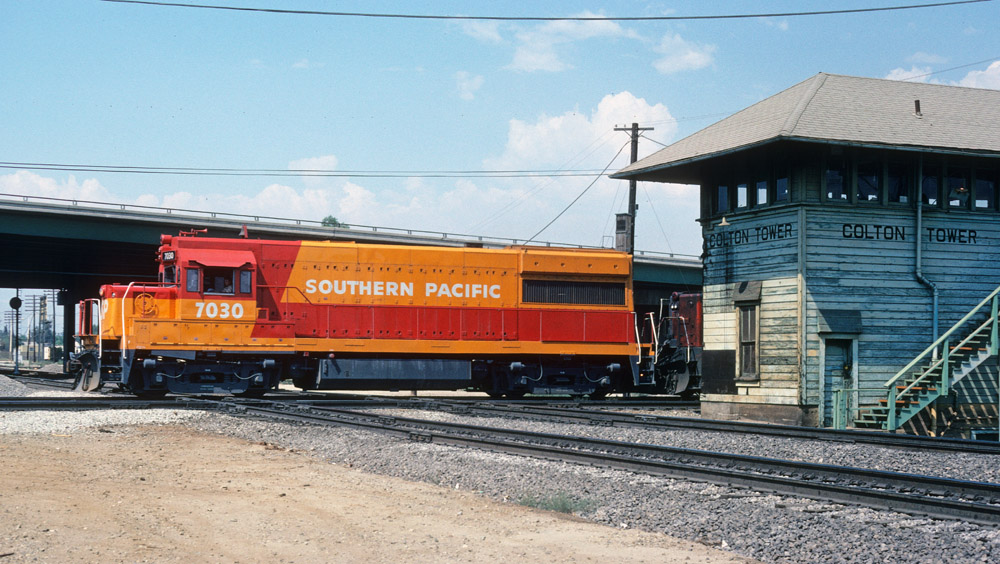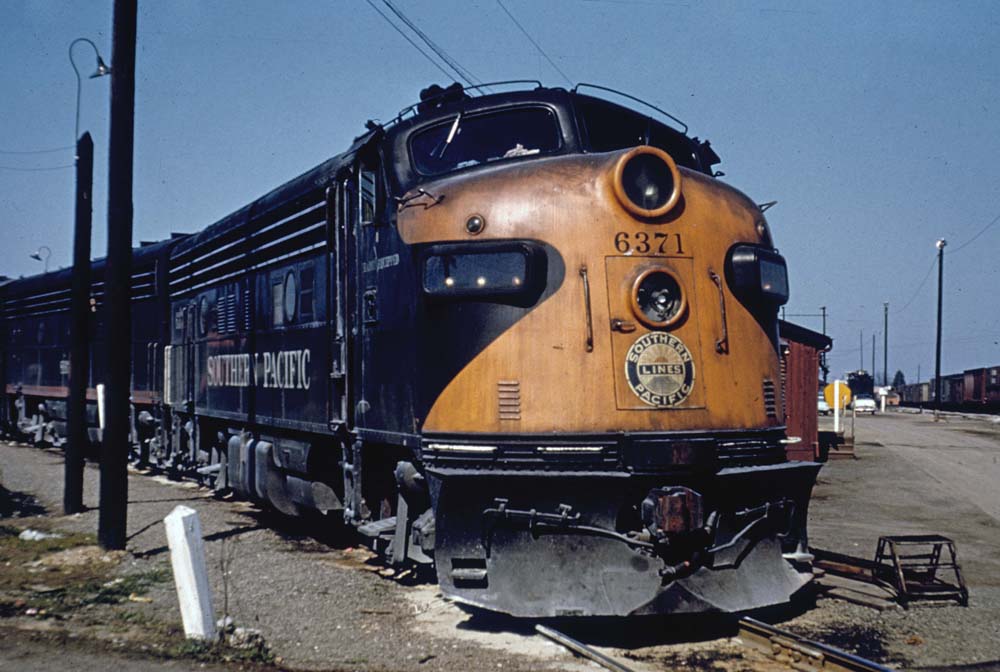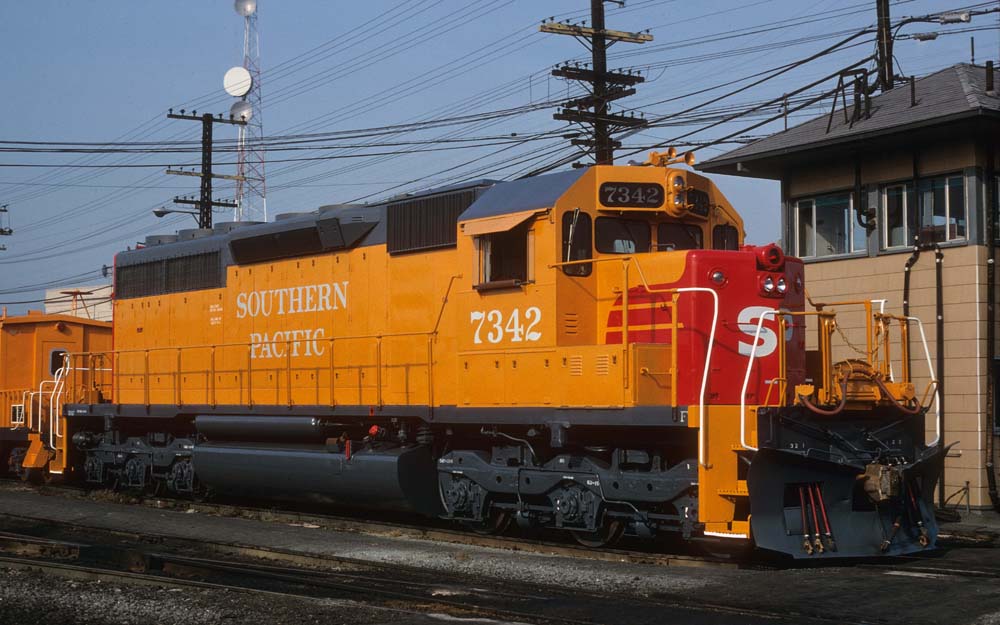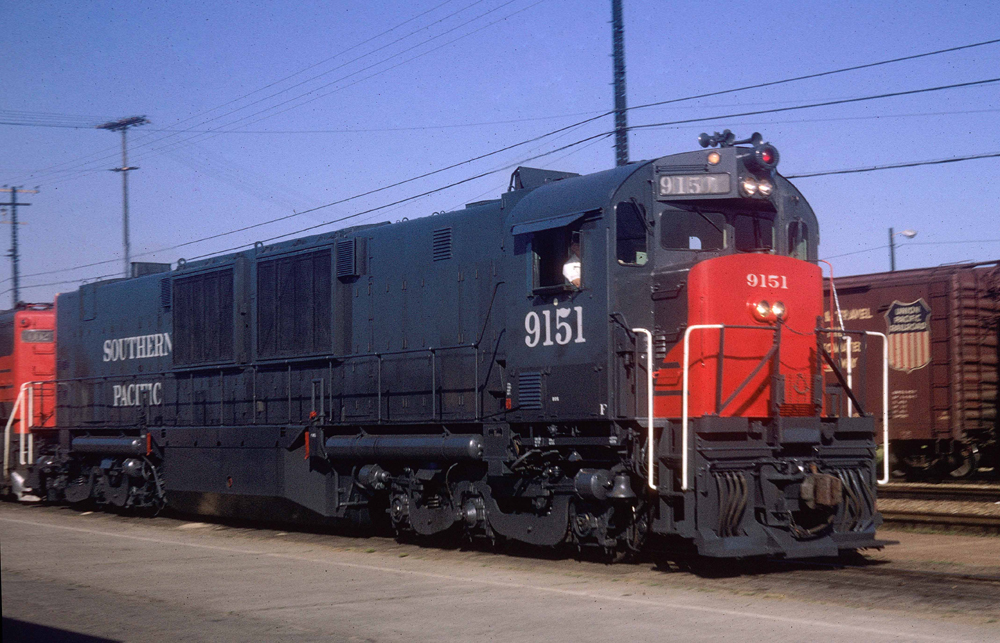Southern Pacific

In 2024, with few exceptions, we have seen the Class I railroads settle down on basic locomotive color schemes. BNSF, for example, moved from orange and green (H1) to orange and black with the introduction of the H4 paint scheme in March 2005. Union Pacific will always have Armour Yellow.
But Southern Pacific — as one of the former major players in the Class I category — never could be content on what its diesel locomotive paint scheme should be. Except for the color orange, with SP, anything went.

There were obvious reasons, of course. Orange is an excellent color to enhance the visibility of a locomotive when the predominant other color is black. The earliest of SP’s diesel switchers were seemingly dipped in the hue, originally offset by various white detail stripes. Orange tiger stripes soon appeared.
With the advent of freight cab locomotives, SP rolled out an elaborate black, silver, red, and yes, orange paint scheme. When the head office wanted to cut costs and simply the design from multiple colors to just two, one of the suggestions was black and orange. Management gave the thumbs-up for a test patch.
What resulted was a paint scheme that was quickly nicknamed the pumpkin scheme, and even then, there was more than one version of it. The majority had orange wings on the front end, but a few had an even easier to apply design (look at the photo of No. 6371).
The two-tone scheme wound up on switchers, road-switchers, freight cab units and even passenger units. The plus benefits were great visibility and a decent reduction in the cost and time necessary for the application. The negatives were that despite having some people approve the scheme, the majority thought it lacked the pizazz a railroad as large and influential as Southern Pacific should have.
More concept schemes, painted on O gauge models, were presented at board meetings until there was a consensus in the late 1950s on scarlet and gray, the color scheme that endured until the acquisition by Union Pacific in the 1990s. Even then, SP continued to explore alternatives, including red-and-orange designs on various second-generation road-switchers.
If you ever wondered why Southern Pacific fans were so loyal, just look at these photos. Not only did you never know what was powering that train you were waiting to photograph, you had no guarantee in what paint scheme it was.
Even in 2024, the last vestiges of SP’s scarlet-and-gray paint scheme can occasionally be seen today on a smattering of locomotives that have eluded the UP paint shop.
















I always liked the SP scarlet and gray paint the best. Back in the 70’s you’d sometimes see more SP than L&N locomotives on the L&N’s lines here in south Alabama.
Oh what memories this story brings back–many, many thanks. Seeing the pumpkin makes one think we are already to Halloween:):):)